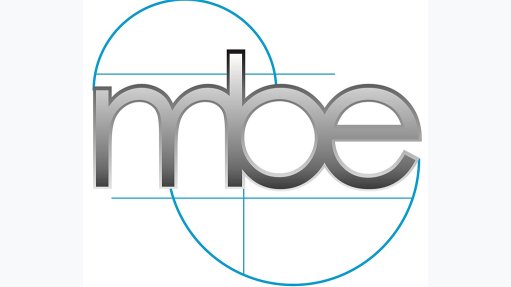Metal export restrictions
For many years, I have spent Friday afternoons ‘eagerly’ scrutinising the Government Gazette. I contend that most of the gazettes are published simply for landfill and recycling purposes, as they hardly qualify as favourite reading material. However, I can assure you that, in all my years of scrutinising the gazettes, there has never been a dull moment.
Take the editions of July 25 and July 26 as cases in point. When picking up the two gazettes, I thought for a moment that I was partaking in one of those ‘spot the difference’ games where one has to find a set number of differences between two similar images.
Both gazettes were seven pages long, both were from the Department of Trade, Industry and Competition (DTIC) and both shared the same title: ‘Request for Comments from Interested Parties on the Proposal to Further Restrict the Export of Copper Semi-Finished Products, Temporarily Prohibit the Export of Used or Second-Hand Rails, and Subject Rails to Export Control’.
The only difference, other than the dates, that I could find was the different gazette numbers – R.3703 and R.3706 – which means the closing dates for comment are also different, being August 15 and August 16.
Two product categories are dealt with – copper semifinished products and rails – with the 11-page ‘Implementation Actions on Measures to Restrict and Regulate Trade in Ferrous and Non-Ferrous Metals Waste, Scrap and Semi-Finished Ferrous and Non-Ferrous Metal Products to Limit Damage to Infrastructure and the Economy’, which was published in the Government Gazette of November 30, 2022, providing background information. The policy was formulated by the DTIC after having taken account of research by independent experts, including those from Trade and Industrial Policy Strategies and Genesis Analytics, as well as comments from State-owned enterprises (SOEs) and the public. The policy identified the export of copper semifinished products as a major avenue for the export of copper waste and scrap and therefore a major avenue that is open for the monetisation of stolen copper.
In the latest proposed amendment of the policy relating to copper semifinished products, the Minister proposed that, to address this persistent problem, the sources of copper which could be used to produce copper semifinished products for export be limited. Until December 15, the International Trade Administration Commission of South Africa (Itac) will only issue export permits for semifinished copper products (unrefined copper, copper anodes for electrolytic refining, refined copper and copper alloys, unwrought copper, master alloys of copper, and copper powders and flakes) after it has determined that the products are manufactured from raw copper ore, copper waste and scrap generated in the ordinary course of business as a by-product of a manufacturing process, or used infrastructure disposed of by SOEs. This limitation will enable Itac to more easily verify the source of the copper used to produce copper semifinished products. Export permits issued prior to the date of publication of the trade policy directive will continue to be valid.
With respect to rails, it is alluded it has come to Itac’s attention that that exporters were exporting ferrous scrap rails (that may consist of stolen infrastructure), including ‘rails’. The exportation of ‘rails’ is not currently subject to Itac’s export control measures, which creates a loophole for the exportation of ferrous rail scrap without any control or regulation. As a consequence, the Minister proposes to prohibit the export of used or second-hand ‘rails’ until December 15; to bring ‘rails’ under Itac’s export permit control; and to direct Itac not to issue export permits for used and second-hand ‘rails’ until December 15, although it may issue export permits for new ‘rails’. After December 15, Itac may issue export permits for new, used and second-hand ‘rails’.
Comments must be submitted by the deadline to the director-general of the DTIC by e-mail on scrapmetalpolicy2023@thedtic.gov.za or hand-delivered to 77 Meintjies Street, Block A, First Floor, Sunnyside, Pretoria, 0002.
Article Enquiry
Email Article
Save Article
Feedback
To advertise email advertising@creamermedia.co.za or click here
Comments
Announcements
What's On
Subscribe to improve your user experience...
Option 1 (equivalent of R125 a month):
Receive a weekly copy of Creamer Media's Engineering News & Mining Weekly magazine
(print copy for those in South Africa and e-magazine for those outside of South Africa)
Receive daily email newsletters
Access to full search results
Access archive of magazine back copies
Access to Projects in Progress
Access to ONE Research Report of your choice in PDF format
Option 2 (equivalent of R375 a month):
All benefits from Option 1
PLUS
Access to Creamer Media's Research Channel Africa for ALL Research Reports, in PDF format, on various industrial and mining sectors
including Electricity; Water; Energy Transition; Hydrogen; Roads, Rail and Ports; Coal; Gold; Platinum; Battery Metals; etc.
Already a subscriber?
Forgotten your password?
Receive weekly copy of Creamer Media's Engineering News & Mining Weekly magazine (print copy for those in South Africa and e-magazine for those outside of South Africa)
➕
Recieve daily email newsletters
➕
Access to full search results
➕
Access archive of magazine back copies
➕
Access to Projects in Progress
➕
Access to ONE Research Report of your choice in PDF format
RESEARCH CHANNEL AFRICA
R4500 (equivalent of R375 a month)
SUBSCRIBEAll benefits from Option 1
➕
Access to Creamer Media's Research Channel Africa for ALL Research Reports on various industrial and mining sectors, in PDF format, including on:
Electricity
➕
Water
➕
Energy Transition
➕
Hydrogen
➕
Roads, Rail and Ports
➕
Coal
➕
Gold
➕
Platinum
➕
Battery Metals
➕
etc.
Receive all benefits from Option 1 or Option 2 delivered to numerous people at your company
➕
Multiple User names and Passwords for simultaneous log-ins
➕
Intranet integration access to all in your organisation














